Beyond the Legend: An In-Depth Look at Bob Marley’s Music and Life
Beyond the Legend: An In-Depth Look at Bob Marley’s Music and Life
Introduction
Bob Marley's music remains one of the most powerful cultural forces of the 20th century. His songs carried universal messages of love, unity, and resistance, while his artistry introduced reggae to global audiences. More than a musician, Marley became a voice for the oppressed, a symbol of hope, and a lasting ambassador of Jamaican culture. His life, though tragically short, left behind a musical legacy that continues to inspire generations. To understand Bob Marley's music fully, we must also explore his life, beliefs, and the journey that shaped his artistry.
Most Asked Questions
Who was Bob Marley?
Bob Marley was born Robert Nesta Marley on February 6, 1945, in Nine Mile, Jamaica. Raised in modest circumstances, he developed an early love for music, blending ska and rocksteady before evolving reggae into a global sound. He co-founded The Wailers, later leading Bob Marley and The Wailers, where he became the face of reggae worldwide. His music fused rhythm with messages of resistance, love, and Rastafarian spirituality. Marley's legacy endures not just through chart-topping songs but also through his influence on social justice and cultural identity.
What was the cause of Bob Marley's death?
Bob Marley died on May 11, 1981, at only 36 years old. He battled acral lentiginous melanoma, a rare form of skin cancer. The illness spread from a toe injury he initially dismissed, eventually reaching his brain, lungs, and liver. Despite his declining health, Marley continued touring and recording, producing some of his most poignant work. His death shocked the world but cemented his status as an eternal musical icon.
Was Bob Marley in a band?
His career began with Peter Tosh and Bunny Wailer, forming The Wailers in the early 1960s. The trio blended Jamaican rhythms with harmonies that helped define reggae. After Tosh and Bunny left, Marley led the re-formed Bob Marley and The Wailers, which featured new musicians and backing singers, including the I-Threes (Rita Marley, Judy Mowatt, and Marcia Griffiths). This new lineup helped carry Bob Marley's music onto international stages, shaping his rise as a global star.
How did Bob Marley become famous?
Marley’s international breakthrough came with Island Records founder Chris Blackwell. Blackwell signed The Wailers and reworked their 1973 album Catch a Fire for international release. With rock-influenced production and wider distribution, Marley reached new audiences, particularly in the UK and US. His dynamic live performances and politically charged lyrics further elevated his status. From there, albums like Burnin’ and Exodus transformed him from a Jamaican artist into a global musical revolutionary.
What was Bob Marley's biggest song?
Bob Marley recorded many classics, but songs like "No Woman, No Cry," "Three Little Birds," and "One Love" remain his most iconic. Each continues to resonate with themes of hope and resilience. Additionally, his posthumous compilation album Legend (1984) became the best-selling reggae album of all time, selling more than 15 million copies worldwide. These tracks and collections embody the timeless spirit of Bob Marley's music.
What religion was Bob Marley?
Bob Marley was a devoted follower of the Rastafarian faith. Rastafari shaped his worldview, influencing both his lyrics and lifestyle. The movement emphasized spiritual connection, resistance against oppression, and reverence for Emperor Haile Selassie I of Ethiopia. Through Bob Marley's music, Rastafarian principles spread far beyond Jamaica, introducing global audiences to its philosophy. His commitment to the faith made him not only a musician but also a spiritual messenger for millions.
The Albums
The Wailing Wailers (1965)
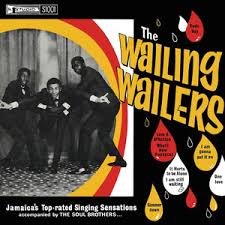
Released in 1965, The Wailing Wailers introduced the world to Bob Marley, Peter Tosh, and Bunny Wailer. This debut album leaned heavily on ska rhythms, blending youthful energy with sharp social commentary. Songs like “Simmer Down” captured the frustrations of Kingston’s ghetto youth while showcasing the trio’s tight harmonies.
Although the production carried a raw edge, the album highlighted the emerging power of Bob Marley's music. Ska dominated Jamaica at the time, yet Marley and The Wailers infused it with deeper meaning. Their lyrics balanced social awareness with infectious dance grooves, signaling the roots of reggae to come.
Critics later recognized the album as an essential piece of Jamaican music history. While it lacked the polished sound of later work, The Wailing Wailers laid the foundation for Bob Marley's music to reach global audiences. The record remains a vital starting point for understanding Marley’s artistic evolution.
Over 15 million copies sold worldwide - This compilation album is perhaps the most commercially successful of all Marley's albums. Released posthumously, it includes many of his greatest hits and has been certified platinum numerous times.
Soul Rebels (1970)
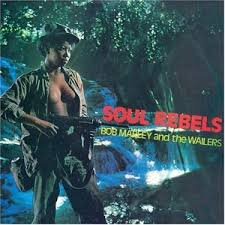
Produced by Lee “Scratch” Perry, Soul Rebels marked a turning point for Bob Marley's music. Released in 1970, the album leaned into raw reggae rhythms with a stripped-down production style. Tracks like “Soul Rebel” and “It’s Alright” showcased Marley's growing lyrical confidence and spiritual themes.
The album carried a gritty edge, reflecting both the influence of Perry and the realities of Jamaican street life. Although modest in commercial performance, it became a cult favorite among reggae enthusiasts. Bob Marley's music in Soul Rebels reflected early Rastafarian ideals, laying the groundwork for his future messages of unity and resistance.
Critics later praised the album’s authenticity and Perry’s minimalist approach. As a result, Soul Rebels remains an important step in Marley’s evolution. Listeners discovered a raw, unpolished sound that foreshadowed the global reach of Bob Marley's music.
Soul Revolution (1971)
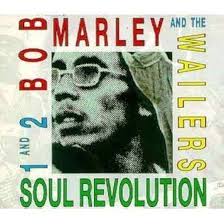
Released in 1971, Soul Revolution deepened Bob Marley's collaboration with Lee “Scratch” Perry. The album expanded on the stripped production of Soul Rebels while offering sharper songwriting. Tracks like “Sun Is Shining” and “Kaya” reflected Marley's growing interest in spirituality, resilience, and love.
Unlike earlier ska-driven work, the album leaned fully into reggae rhythms, cementing the unique sound of Bob Marley's music. While not commercially successful at the time, it built credibility among reggae purists and international audiences.
Moreover, Soul Revolution highlighted the chemistry between The Wailers and Perry’s production style. The result was a record that carried both grit and soul. With hindsight, the album is viewed as a vital stepping stone toward Marley's global breakthrough. Bob Marley's music on Soul Revolution demonstrated his ability to transform raw roots into universal messages.
The Best of The Wailers (1971)
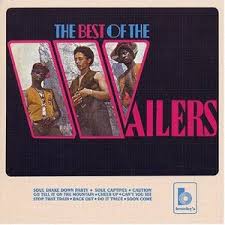
Despite its misleading title, The Best of The Wailers contained entirely new material when it was released in 1971. Recorded before their Island Records breakthrough, the album blended socially conscious lyrics with catchy, upbeat reggae grooves. Songs like “Dreamland” and “Caution” revealed Marley’s growing lyrical sophistication and the trio’s vocal strength.
Importantly, this album marked one of the last times Marley, Peter Tosh, and Bunny Wailer recorded together. The themes reflected hope, cultural pride, and resilience, showcasing the expanding depth of Bob Marley's music.
Although critics initially overlooked it, the album earned respect over time as an essential early reggae release. Furthermore, it foreshadowed Marley's shift toward internationally appealing yet politically charged material. The Best of The Wailers remains significant because it bridged the early ska years with the socially driven reggae that defined Bob Marley's music.
Catch a Fire (1973)

Catch a Fire arrived in 1973 as the first Bob Marley and The Wailers album released internationally. Chris Blackwell of Island Records transformed its sound, adding rock flourishes to make it accessible to wider audiences. Songs like “Concrete Jungle” and “Stir It Up” showcased Marley’s mix of political urgency and romantic warmth.
The album became the true breakthrough for Bob Marley's music, bringing reggae into the global spotlight. Its fusion of authentic roots reggae and rock influences captivated critics and new listeners alike.
Importantly, Catch a Fire established Marley not only as a musician but also as a cultural voice. The project helped secure his position as reggae’s ambassador beyond Jamaica. Ultimately, this release marked the beginning of Bob Marley's music inspiring worldwide audiences, blending resistance with undeniable rhythm.
Burnin’ (1973)
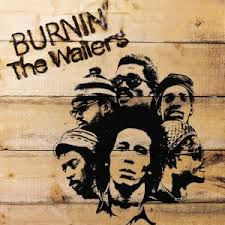
Later that same year, Bob Marley and The Wailers released Burnin’. It was the final album to feature Peter Tosh and Bunny Wailer. With songs like “Get Up, Stand Up” and “I Shot the Sheriff,” the album elevated reggae into a revolutionary art form.
The record carried fiery themes of resistance, empowerment, and rebellion, strengthening the political side of Bob Marley's music. Its raw energy resonated deeply, while Eric Clapton’s cover of “I Shot the Sheriff” introduced Marley to rock audiences worldwide.
Critics praised Burnin’ for its intensity and authenticity. Furthermore, it solidified Marley as an international force whose lyrics demanded attention. Today, the album stands as a milestone in reggae’s evolution, offering some of the boldest statements found in Bob Marley's music.
Natty Dread (1974)
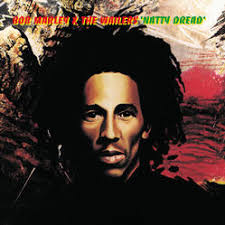
Natty Dread, released in 1974, marked a new era for Bob Marley and The Wailers. It was the first album credited solely to Marley after Tosh and Bunny departed. With backing vocals by the I-Threes, including Rita Marley, the record introduced a fresh sound.
Songs like “Lively Up Yourself” and “No Woman, No Cry” balanced joy with social commentary. This blend highlighted the versatility of Bob Marley's music. Themes of survival, resilience, and cultural pride ran throughout the album, reflecting Marley’s deepening Rastafarian influence.
Commercially and critically, Natty Dread performed strongly, further propelling Marley into the international spotlight. Moreover, its live performances — especially “No Woman, No Cry” — amplified its impact. As a result, the album remains a cornerstone of Bob Marley's music, capturing the transition from roots to global resonance.
Rastaman Vibration (1976)
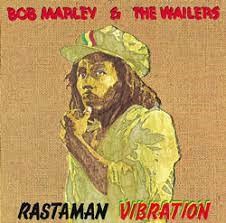
Released in 1976, Rastaman Vibration became Bob Marley’s highest-charting album in the United States. It featured uplifting anthems like “Roots, Rock, Reggae” and “Positive Vibration.” With sharp production and deeper bass lines, the record delivered a polished yet powerful sound.
The themes explored faith, resistance, and cultural pride, making the album one of the most direct statements in Bob Marley's music. His lyrics embraced Rastafarian ideals while resonating with audiences searching for empowerment and truth.
Critics admired its clarity and accessibility, while fans embraced its unifying energy. Moreover, the album’s commercial success brought Marley closer to mainstream recognition. Rastaman Vibration remains a crucial work, showcasing Bob Marley's music as both spiritually charged and globally appealing.
Exodus (1977)
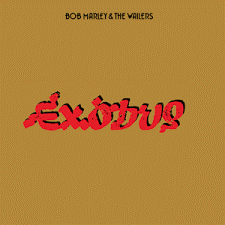
Exodus, released in 1977, stands among the greatest achievements of Bob Marley’s career. Recorded in London after an assassination attempt in Jamaica, the album carried themes of exile, survival, and renewal.
Iconic songs like “Jamming,” “One Love/People Get Ready,” and the title track captured Marley’s balance of joy and resistance. The record’s two halves contrasted: one deeply political, the other celebratory and uplifting. This duality defined the unique power of Bob Marley's music.
Exodus topped charts in the UK and cemented Marley as an international superstar. Furthermore, critics hailed it as a masterpiece of 20th-century popular music. Today, it continues to stand as a timeless example of Bob Marley's music blending hope, resilience, and unity.
Kaya (1978)
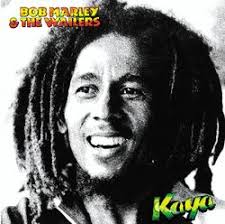
Released in 1978, Kaya revealed a gentler, more reflective side of Bob Marley's music. With tracks like “Is This Love” and “Satisfy My Soul,” the album leaned toward love, peace, and everyday joy.
Although some critics expected heavier political themes, Marley’s softer approach broadened his audience. The relaxed tone showcased versatility without abandoning reggae’s core identity. Importantly, this contrast highlighted the full emotional spectrum within Bob Marley's music.
Commercially successful, Kaya resonated with listeners seeking warmth and optimism. Moreover, it balanced Marley’s catalog by showing that reggae could express tenderness as powerfully as resistance. As a result, the album endures as proof of Marley’s ability to reach the heart while still echoing universal truths.
Survival (1979)
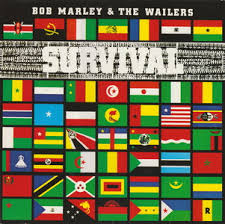
Released in 1979, Survival was one of the most politically charged statements in Bob Marley's music. The album focused on African unity, resistance, and liberation. Tracks like “Zimbabwe” and “Africa Unite” reflected Marley’s deep solidarity with global struggles.
The record carried urgent rhythms and militant lyrics, making it one of his most serious works. Critics praised its bold stance, even though it leaned less toward mainstream accessibility. Nevertheless, the messages of Survival became central to Bob Marley's music and enduring influence.
Commercially, it performed modestly, yet it solidified Marley’s role as a voice for justice. Moreover, the album inspired movements far beyond Jamaica, resonating with oppressed peoples worldwide. Today, Survival stands as a testament to Bob Marley's music as a tool for cultural and political awakening.
Uprising (1980)
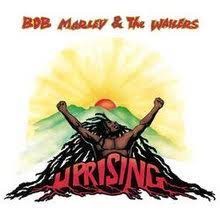
Uprising, released in 1980, was the final studio album during Marley’s lifetime. It revealed both personal reflection and spiritual resilience. Songs like “Could You Be Loved” and “Redemption Song” became instant classics, each carrying timeless messages of hope.
The record balanced upbeat rhythms with profound lyrical depth. Spiritual themes dominated, reflecting Marley’s Rastafarian beliefs and personal struggles with illness. This emotional duality gave the album lasting power.
Fans embraced Uprising, making it a commercial success, while critics admired its authenticity. Furthermore, the album deepened the spiritual resonance of Bob Marley's music. Its legacy lies in how Marley transformed personal hardship into universal inspiration. Uprising remains one of the most moving and defining works in Bob Marley's music.
Confrontation (1983)
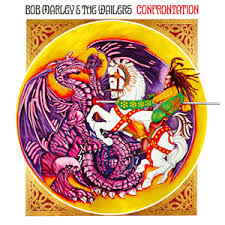
Released posthumously in 1983, Confrontation compiled unreleased tracks and alternate mixes left behind by Marley. Despite being assembled after his passing, the album carried powerful energy. Songs like “Buffalo Soldier” and “Chant Down Babylon” stood out as highlights.
Themes of resistance, unity, and faith continued to shape Bob Marley's music here. While it lacked the cohesion of earlier studio works, it still offered a glimpse into Marley’s enduring vision.
Critics received it warmly, acknowledging the strength of its standout tracks. Moreover, fans valued it as one final chapter in the Wailers’ story. Confrontation underscored the lasting influence of Bob Marley's music, proving his voice remained vital even after his death.
Live! (1975)
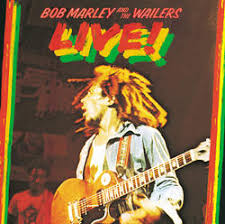
Recorded at London’s Lyceum Theatre in 1975, Live! captured the raw power of Bob Marley's music on stage. The album featured the legendary performance of “No Woman, No Cry,” which became one of Marley’s signature songs.
The energy of the Wailers and the audience interaction created a magnetic listening experience. Marley’s charisma and spiritual presence shone through every track, proving that Bob Marley's music carried even greater impact live.
Critics hailed Live! as a turning point, showcasing reggae’s ability to captivate international audiences. Moreover, it introduced Marley to fans who had never witnessed him in concert. This recording remains a cornerstone of Bob Marley's music, embodying the essence of his live legacy.
Babylon by Bus (1978)
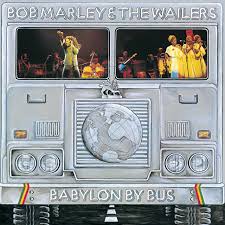
Released in 1978, Babylon by Bus documented Bob Marley and The Wailers during the Exodus Tour. This double live album highlighted the band’s tight musicianship and Marley’s commanding stage presence.
Tracks like “Exodus,” “Punky Reggae Party,” and “Jamming” revealed the vitality of Bob Marley's music performed in front of global audiences. The record captured Marley at the height of his fame, connecting messages of unity with electrifying energy.
Critics praised the album for its authenticity and dynamic performances. Furthermore, it solidified Marley’s reputation as one of the greatest live performers of the era. Babylon by Bus remains a vibrant document of Bob Marley's music, celebrating his ability to transform concerts into spiritual gatherings.
Legend (1984)
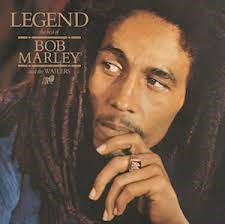
Released in 1984, Legend became the best-selling reggae album of all time. It compiled Marley's most iconic songs, including “One Love,” “Three Little Birds,” and “Redemption Song.” The collection offered a perfect entry point into Bob Marley's music, reaching audiences far beyond reggae fans.
Its balance of love anthems and political statements highlighted the breadth of Marley’s artistry. Moreover, the album introduced new generations to Bob Marley's music, ensuring his timeless messages remained relevant.
Commercially, Legend has sold over 15 million copies worldwide. Critics consistently praise it as one of the greatest compilation albums ever released. Above all, Legend continues to serve as the defining showcase of Bob Marley's music, keeping his legacy alive across decades.
Talkin’ Blues (1991)
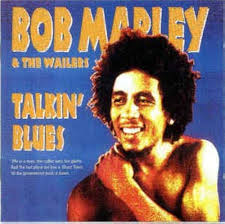
Talkin’ Blues, released in 1991, combined live performances with rare studio recordings. It included tracks from Marley’s 1973 U.S. tour and insightful interviews. This format allowed listeners to connect with Bob Marley's music while also hearing his thoughts in his own words.
The album emphasized Marley’s authenticity, blending performances like “Burnin’ and Lootin’” with candid conversations about life and Rastafari. Consequently, Talkin’ Blues deepened understanding of the man behind the music.
Critics welcomed its raw honesty and unique format. Furthermore, fans valued the chance to experience Bob Marley's music within a more personal context. Talkin’ Blues remains an important release, offering both sound and story in equal measure.
Natural Mystic: The Legend Lives On (1995)
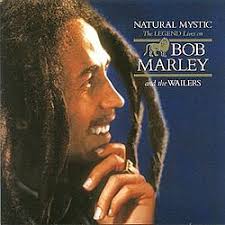
Released in 1995, Natural Mystic: The Legend Lives On served as a broader introduction to Bob Marley's music beyond Legend. It included deeper cuts such as “So Much Trouble in the World” and “Iron Lion Zion.”
The collection highlighted Marley’s political edge alongside his spiritual and romantic themes. Therefore, it revealed the wider scope of Bob Marley's music. Listeners discovered songs that balanced global resistance with universal hope.
Critics praised the thoughtful track selection, noting its ability to showcase Marley’s depth. Moreover, fans appreciated how it expanded beyond the familiar hits. Natural Mystic reinforced the enduring influence of Bob Marley's music, proving his voice still carried urgent relevance decades after his passing.
Bob Marley's music continues to transcend time, culture, and geography. From his earliest ska-influenced recordings with The Wailers to his globally acclaimed albums with Bob Marley and The Wailers, each release carried a unique balance of rhythm, spirituality, and resistance. His songs gave a voice to the oppressed, spread messages of love and unity, and brought reggae to international recognition.
Even decades after his passing, Marley’s influence remains unmatched. Albums like Legend, Exodus, and Uprising ensure his messages stay alive, while deeper works such as Survival and Rastaman Vibration reveal his fearless political voice. Collectively, Bob Marley's music serves not only as entertainment but also as a cultural force that shaped global consciousness.
Through his art and his unwavering devotion to truth, Bob Marley became more than a musician. He became a symbol of hope — and his music will live forever.
Recent Posts
Queen studio albums: A Review
Phil Collins Albums Ranked & Reviewed – Complete Guide to Every Studio Album
The best of Massive Attack
Let’s Make Magic
Book Your Event DJ Now




